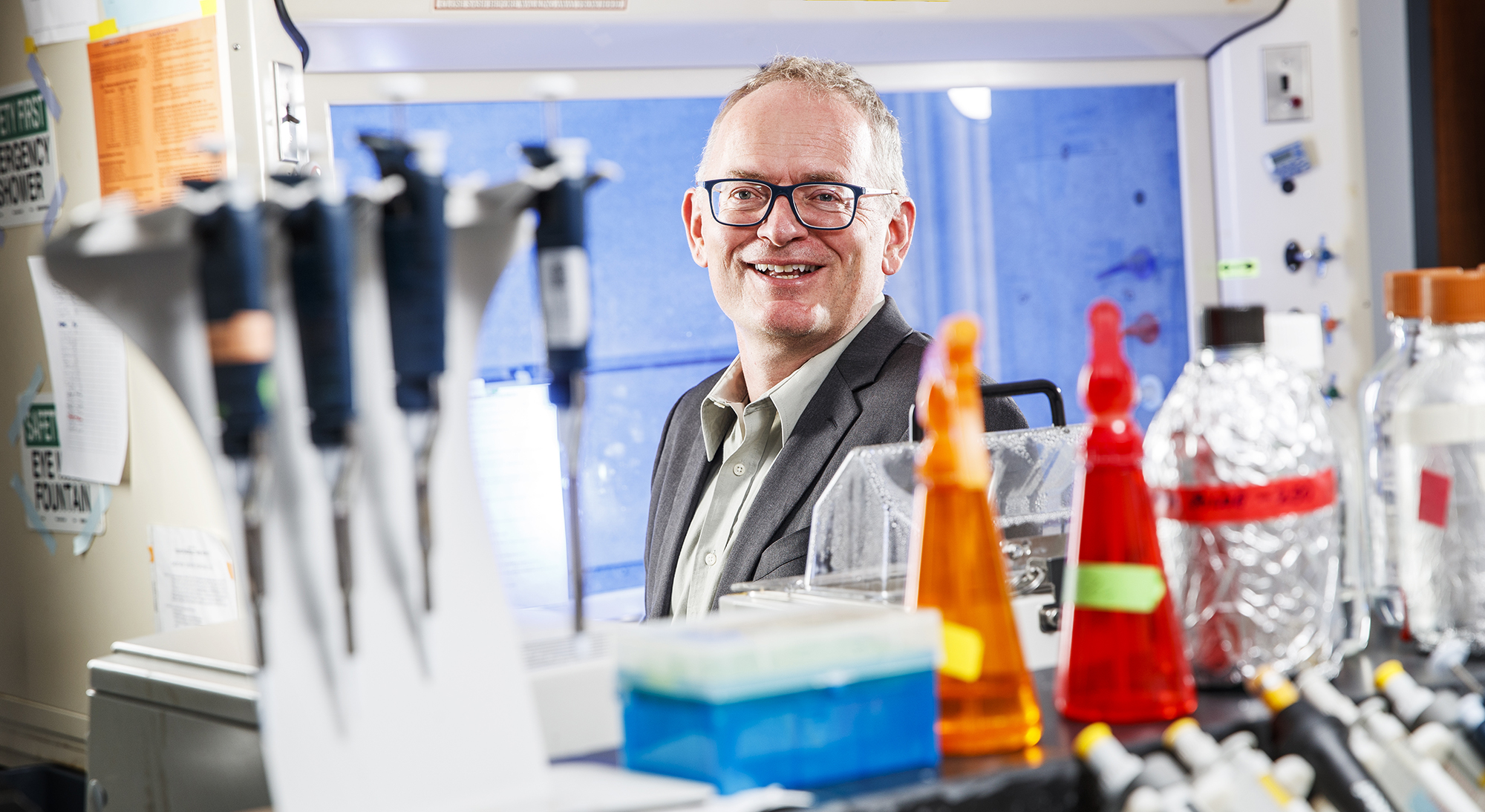
After five years of research, University of Nebraska scientists have made important progress in understanding obesity and obesity-related diseases on a molecular level. They’re continuing to look for “consumer-friendly” ways to prevent these deadly threats to human health.
The Nebraska Center for the Prevention of Obesity Diseases through Dietary Molecules was founded five years ago with an $11 million grant from the National Institutes of Health’s Center of Biomedical Research Excellence program, or COBRE. The center has just received an additional $11 million to continue another five years.
NPOD aims to become a leader in the prevention of obesity and obesity-related diseases, including Type 2 diabetes, cardiovascular disease and non-alcoholic fatty liver disease, by understanding processes at the molecular level, said Janos Zempleni, center director and Willa Cather Professor of molecular nutrition in the Department of Nutrition and Health Sciences.
Specifically, NPOD researchers focus on understanding how nutrients initiate biochemical chain reactions that cause a cellular response, including fat storage and disease-causing inflammation. These nutrient-dependent pathways are promising targets for methods to prevent and treat obesity-related diseases.
“The national trends for obesity continue to be really bad,” Zempleni said. “Our overall concept is to come up with strategies that are consumer friendly.”
As the center moves into its next phase of research, Zempleni said, the research team expects to hone its work further.
For example, Dustin Yates, assistant professor of animal science, has uncovered one promising strategy. He’s targeting a predisposition toward obesity, diabetes and other metabolic disorders that occurs during fetal development. Maternal stress, including poor diet, obesity, smoking or drug use, can cause the fetus to conserve nutrients, resulting in a lower birth weight. After birth, in a food-rich environment, that thrifty adaptation becomes a liability, affecting glucose metabolism and energy storage.
Chronic stress stunts the placenta, causing fetal hypoxia, a lack of oxygen that can lead to developmental changes. Today, underweight babies are treated after birth. Yates’ team discovered that providing Mom with oxygen for eight hours a day — the human equivalent of wearing an oxygen mask at night — greatly improves fetal growth in sheep.
The Nebraska Center for the Prevention of Obesity Diseases has been key to bringing together scientists across disciplines.
“NPOD’s been completely instrumental,” Yates said of the center’s support, citing research funding, internal and external mentorship programs, symposia and the Biomedical and Obesity Research Core facility. “The research core provides a lot of services and techniques that I don’t have the ability to do on my own. So we get a bigger picture of what’s going on.”
The facility conducts blood chemical analyses, providing researchers with metabolism and other data. BORC also conducts animal behavior tests and cell culture work, services that are difficult to outsource to distant laboratories.
Like Yates, Juan Cui, assistant professor of computer science and engineering, benefited from the support early in her career.
“Working on a bigger team, you have the chance to expose yourself to more significant research questions,” she said. “This is very effective training for me. They really sped up my progress.”
As a computer scientist focused on improving human health, Cui relies on collaborations to put her research to greater effect. Among her research accomplishments, she developed MicroRNA Discovery, a web-based platform that gives researchers worldwide the ability to analyze vast numbers of nucleotide sequences found in blood and urine samples. The tool helps identify microRNAs, little understood cell fragments important to gene regulation, and determine whether they are native to the organism or arrived through nutrient intake. MicroRNA Discovery could help identify irregular levels of microRNAs in the bloodstream, signaling the onset of cancers or other diseases and speeding the screening process.
Zempleni said the center has generated nearly $100 million in external funding, about $36 for every dollar the university invested; the careers of five junior faculty (so far) launched with independent grants; and a vital research gap filled with a new core facility for faculty and industry.
“By NIH standards, this is exceptional,” Zempleni said.
To date, NPOD has focused on supporting junior faculty, an early COBRE requirement. Now, Zempleni plans to support established researchers as well.
He’s also thinking long term. To help translate NPOD research into human health treatments, he’s expanding relationships with University of Nebraska Medical Center and University of Nebraska–Lincoln faculty, including public health and psychology.








